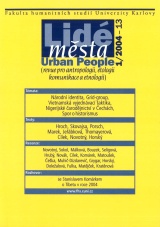Pískovcové převisy středních a severních Čech: jejich vznik, sedimenty a paleoantropologický význam
DOI:
https://doi.org/10.14712/12128112.4356Abstrakt
The most important findings of the study of sandstone rockshelter and their infillings can be summarised as follows: 1. Genesis of rockshelters: The race of rockshelter formation under Holocene climatic conditions is low, because Mesolithic artefacts are often found in undisturbed layer 2-15 cm from the sandstone wall, thus che shape of many rockshelters has not changed much during last at least 9000 radiocarbon years. The destructive action of frost during ice ages seems to be responsible for the origin of majority rockshelters. The reservoir of capillary water is located either in more permeable layers of sandstone masiff but more often in loose sediments under sandstone cliffs - almost all bigger rockshelters can be found at the contact of slope sediments and sandstone rock. Complex interactions among salt weathering, surface hardening caused by free silica, exfoliation and biological destructive and protective processes can be observed. 2. Calcareous environment of the Early Holocene: The higher CaCO3 content in Early Holocene soils has been recorded from a number of areas where the presents-day soils are decalcified. Possibly the most significant feature of Holocene strata under sandstone cliffs that are influenced by human activities is the presence of usualy 1-3 cm thin, grey calcitic intercalations that contain some 50 wt. % of fine grained calcite. Geochemical study indicates that the carbonate layers with high phosphorus content and low carbonate 8/13C and 5/18O composition were formed as a result of decomposition of cultural layers rich in organic and bone material. The wood ash is the principal source of carbonate. 3. Environmental crisis in Late Bronze Age: The environmental analyses based on sedimentology and fossil content of the Holocene strata display profound differences in forest type, soil fertility, erosion, decalcification and probable dessication and deforestration to happen during Subboreal sensu Ložek (1982) represented in sandstone areas in many cases by Lusatia culture of the Late Bronze Age some 3 000 years B.P. This event that is accompanied by erosion and enhanced slope activity represents one the most important environmental changes of the whole Holocene on the area of Czech Republic. 4. Protection: The sandstone rockshelters of Northem Bohemia yield after a decade of the intense research more facts about Mesolithic life than a century of previous studies, because of the accompanying fossil relicts chat became preserved in dry, calcareous environment. We expect that sandstone rockshelters may in future due to their number and geographic distribution over large areas represent (especially for Holocene) as valuble record as did classical caves for Pleistocene studies of 19th century. While it is now almost impossible to find a major undisturbed karst cave infillings, the majority of sandstone rockshelters is intact.
Stahování
Publikováno
Jak citovat
Číslo
Sekce
Licence

Tato práce je licencována pod Mezinárodní licencí Creative Commons Attribution-NonCommercial-NoDerivatives 4.0.


